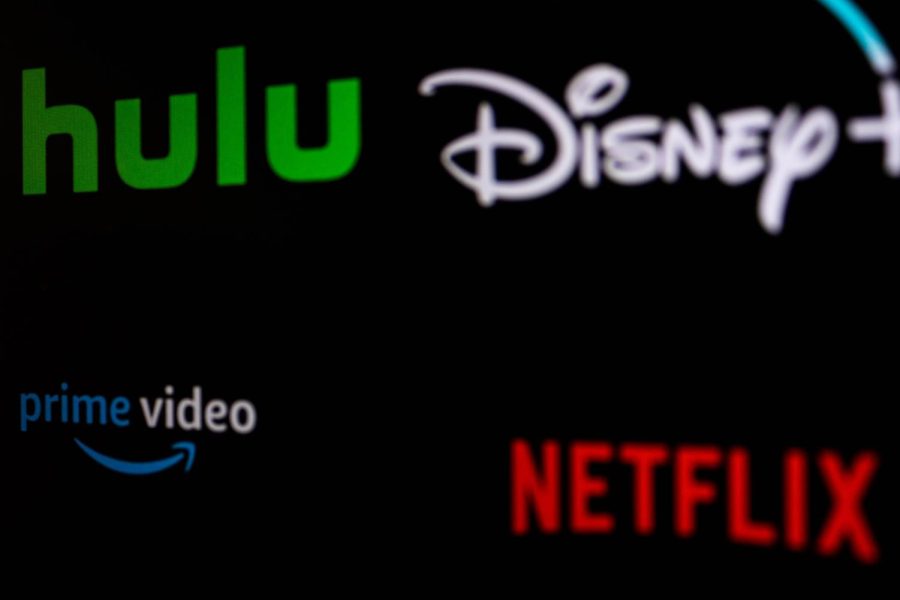Students stream TV on 4+ platforms
Hulu, Disney+, Amazon Prime Video and Netflix are four of the streaming services that AACC students use.
April 13, 2022
AACC students said Tuesday they subscribe to four or more streaming services for movies and television shows.
In an informal poll of 20 students around campus, 11 said they subscribe to four or more streaming services, eight subscribe to two or three services and one subscribes to a single streaming platform.
Still, most said they watch their shows on up to half a dozen services by sharing passwords with friends.
“Between me and my friends we share six streaming services,” second-year biology student Keyona Brown said. “We share passwords so we can all pay separately for different subscriptions. … The price to pay for all of them by yourself is too much.”
In the U.S., more than 90 platforms stream TV shows and movies. The big six streaming services are Netflix, Hulu, Amazon Prime Video, HBO Max, YouTube TV and Disney+. All but one, HBO Max, increased the cost of their subscriptions since they launched.
From 2018-2021, YouTube TV increased prices from $35 a month to $65. Hulu also raised monthly fees for its TV service and its streaming-only from $5.99 to $6.99 monthly.
Netflix’s price point for the standard edition has nearly doubled since its creation. Debuting at $8 a month in 2014, Netflix has jacked up prices to $15.49 in 2022. Following its creation in 2019, Disney+ has only ever increased member fees one time, when costs increased by $1 per month, from $7 to $8. Hulu increased the monthly streaming price from $5.99 o $6.99.
However, not every large streaming service follows the trend of gradually increasing price points. HBO Max is the only streaming service among the big six to have never increased its subscription fee. The cost of a subscription has never run higher than $14.99 a month since its inception in 2020.
“Right now, I have five different streaming services,” second-year law student Max Wenninger said. “One is Paramount Plus, then HBO Max, Amazon Prime, Hulu and Netflix. I actually don’t pay for any of them. My mom has an Amazon Prime account … and all the other ones I use my friends’ passwords.”
The practice of sharing passwords is a common way of avoiding paying for a multitude of different streaming services. However, password sharing is a federal crime under the Computer Fraud and Abuse Act. Still, no individual has ever been prosecuted for sharing a streaming service password.
First-year computer science student Jacob Stone also subscribes to various platforms.
“In total, I watch [television and movies] on four separate platforms,” he said. “They are Netflix, Amazon Prime, Hulu and Peacock. I don’t pay for all of them myself though. Me and my friends all split the costs and share passwords. This helps with the large price tag.”
“I only pay for Disney+ but I can watch movies on tons of different websites,” second-year transfer studies student Matthew Kondracki said. “Between me, my friends and family all paying for different streaming services I have access to eight different platforms.
However, some students subscribe to just one or two platforms. Some attributed this to high prices when having payments due for multiple subscriptions.
Second-year computer science student Caylin Mooney subscribes to one.
“I only subscribe to HBO Max because they have the best movies available,” she said. “It isn’t worth it to pay for lots of different subscriptions because I have other things to pay for like rent, gas and food.”
“It’s a bit ridiculous, to be honest … how sometimes it feels like even when you subscribe to three or four different websites, you are still missing out on so many TV shows and movies,” second-year geology student Cameron Siegel, who pays for two subscriptions himself, said. “If I didn’t have multiple people who I shared subscriptions with … I would never have access to all these big streaming services.












